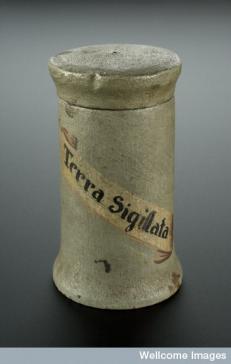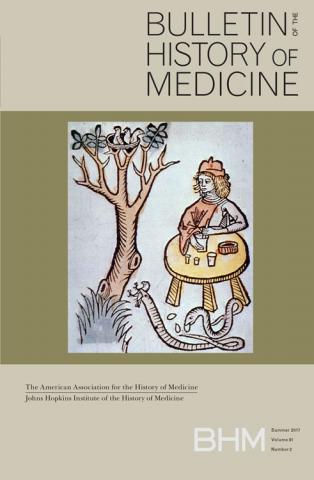This Working Group seeks to investigate the processes and practices through which early modern men and women tested and evaluated medicinal cures. The testing of remedies has long been mentioned as an important precursor to the Baconian “experimental philosophy,” but only recently have historians begun to examine the specifics of drug testing in the early modern world. The more scholars have looked, the more they have found evidence of systematic drug testing by a wide variety of individuals: apothecaries, Jesuits, women, empirics, distillers, physicians, princes, and priests. The Working Group hopes to bring together scholars working on all of these areas in order to develop a more complete picture of drug trials in the early modern world.
Early modern Europe was awash with a dizzying variety of remedies both old and new. Voyagers returning from the New World introduced exciting new materia medica like the famed Jesuit’s or Peruvian Bark, while others brought antidotes from Turkey and the Far East; iatrochemists invented panaceas and complex medical distillations; enterprising medical practitioners touted the healing properties of the newly fashionable mineral waters and spas; innovators proffered new medical technologies such as trusses and electrical cures; and new religious and occult therapies flourished as well. These diverse new medical cures were quickly absorbed into the existing arsenal of remedies utilized by early modern men and women to alleviate ailment and prevent sicknesses. Together, the varied methods of curing transformed the early modern medical landscape, enriching patient choices and shifting the power dynamics between different medical practitioner groups and between patients and practitioners. With so many options to choose from, processes of testing, hands-on trials and experimentation were central to the evaluation and validation of potential cures.
In tandem with broader trends in early modern medicine, first-hand observation and personal experiences took on increasingly important roles in the evaluation of remedies. This focus on assessing the efficacy of cures led to increased interest in testing specific therapies and the sharing of results across wide geographical regions. For example, the German territories were abuzz in 1580 with the news of a marvelous new drug, a clay from Silesia called “terra sigillata.” Rumored to be both an effective antidote to all poisons and a cure for a wide range of ailments, the drug attracted interest up into the highest echelons of German society. One prominent prince, Landgrave Wilhelm IV of Hesse-Kassel, was so intrigued that he decided to test its efficacy on eight dogs—all were given poison but only half the antidote. Only the dogs given the antidote lived, an impressive enough result that a handwritten report of the trial quickly circulated to other courts and towns. Landgrave Wilhelm’s success prompted another prince, Count Wolfgang II of Hohenlohe, to try the drug on a condemned criminal (who also lived). Accounts of both trials were appended to a Latin book published in 1583 and translated into English in 1587 and German in 1589.
The case of the Silesian terra sigillata can hardly be seen as unique. By the later seventeenth century, narratives of successful remedy trials flooded contemporary medical writings appearing in numerous genres of medical texts ranging from learned tomes to broadsheet advertisements. Early modern householders, too, engaged in the evaluating and testing of home-based remedies. Edward Conway, second Viscount of Conway and Killutagh, actively “made trial” of a number of recipes including directions to make brew ale and a cure for the bloody flux involving the ginger powder. In retirement at Petworth, the Earl of Northumberland’s country estate in Sussex, Conway equipped himself with furnaces and stills to conduct his own trial of new remedies. The fruits of these trials and Conway’s own speculation on potential cures formed the core of a series of letters between Conway and his nephew Edward Harley. Evidence of household testing even made it into Robert Boyle’s History of Colours, in which he noted that a popular cordial called syrup of violets turned red when an acidic substance such as lemon juice was added and green when a base was added, echoing similar observations in household recipes.
In sum, the Working Group aims both to highlight the prevalence and diverse forms of early modern drug testing and to delve into questions of general principles. Did similar methods of testing develop in different areas? How influential were other trial models, such as legal trials and the assaying of metals, on the methodology for testing cures? To what extent did methodologies for testing drugs differ from the testing of other remedies, such as miracle cures? How did the procedures and methods developed and used to test cures interrelate to other processes of natural inquiry? How were the drug trials written up, recorded, and archived? How do these methods of information management compare with data archiving in other early modern sciences? What role did explorations in the New World and the East play in the drive to test remedies? What effect did the increasing focus on natural particulars and experiential knowledge have on remedy testing, and vice versa?


